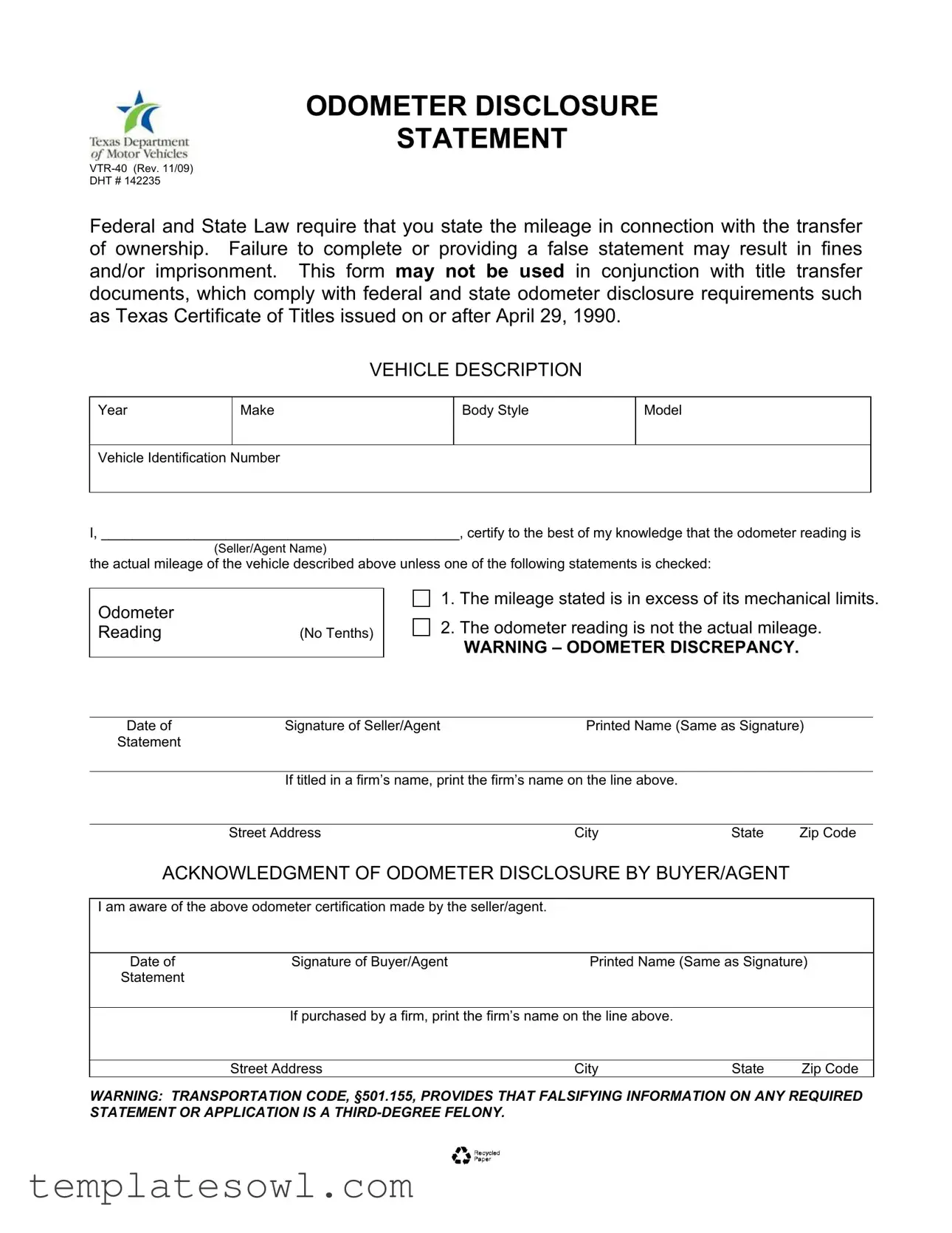What is the Texas Odometer Statement form?
The Texas Odometer Statement form, known as VTR-40, is a document required when transferring ownership of a vehicle in Texas. This form ensures that the mileage on the vehicle is accurately represented, which is crucial for the buyer to understand the vehicle’s history and potential value.
Who needs to complete the Texas Odometer Statement form?
Both the seller and buyer (or their agents) must complete this form during a vehicle sale. The seller certifies the mileage, while the buyer acknowledges this certification. The form is an important part of the vehicle transfer process because it helps prevent fraud related to odometer readings.
What key information is included in the Odometer Statement?
The form asks for essential details such as the year, make, body style, model, and Vehicle Identification Number (VIN) of the vehicle. Additionally, the seller must provide their name, address, and the current odometer reading without tenths. The seller also certifies that the odometer reading is accurate or marks specific circumstances if it's not.
What happens if I don’t complete the Texas Odometer Statement?
Failing to complete this form can result in serious consequences. Both federal and state laws require accurate mileage disclosure, and failure to comply may lead to fines or even imprisonment. For both buyers and sellers, it is essential to fill out this form correctly to avoid legal complications.
Can the Texas Odometer Statement be used with other title transfer documents?
No, the Texas Odometer Statement cannot be used in conjunction with title transfer documents that align with federal and state odometer requirements. It should only be filled out separately and when specifically needed for the transaction.
What should I do if the odometer reading isn’t accurate?
If you have determined that the odometer reading is inaccurate due to a prior malfunction, you must indicate that on the form by checking the appropriate box. You can state that the mileage is in excess of its mechanical limits or indicate that the reading does not reflect the actual mileage.
What are the potential legal repercussions for falsifying the Odometer Statement?
Falsifying information on the Texas Odometer Statement is not taken lightly. Under the Texas Transportation Code, it is classified as a third-degree felony, which could result in severe legal consequences. It is critical to provide accurate and honest information to avoid any legal issues.
Where can I obtain a Texas Odometer Statement form?
The Texas Odometer Statement form, VTR-40, can be obtained online from the Texas Department of Motor Vehicles website or through their local offices. It is advisable to ensure you have the most recent version of the form when conducting your vehicle transaction.

